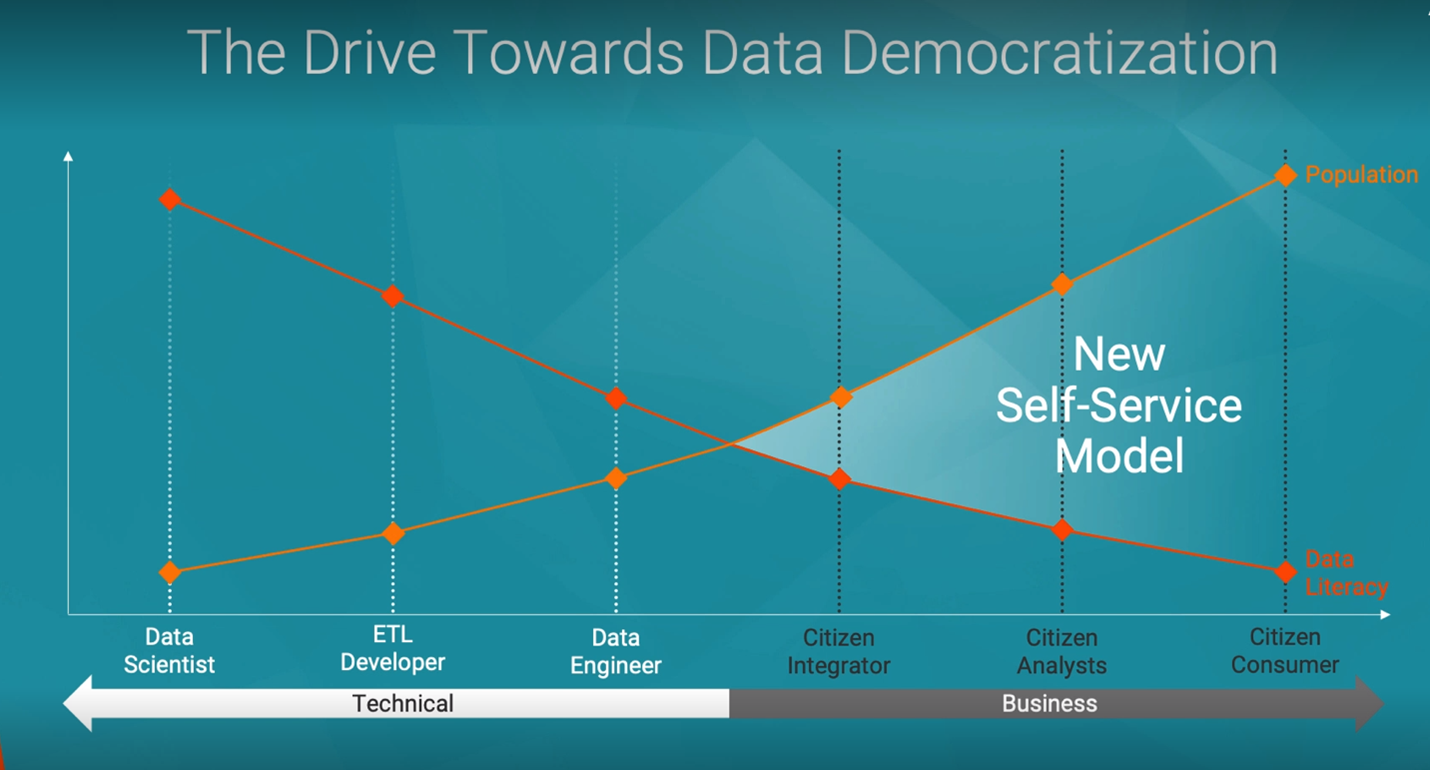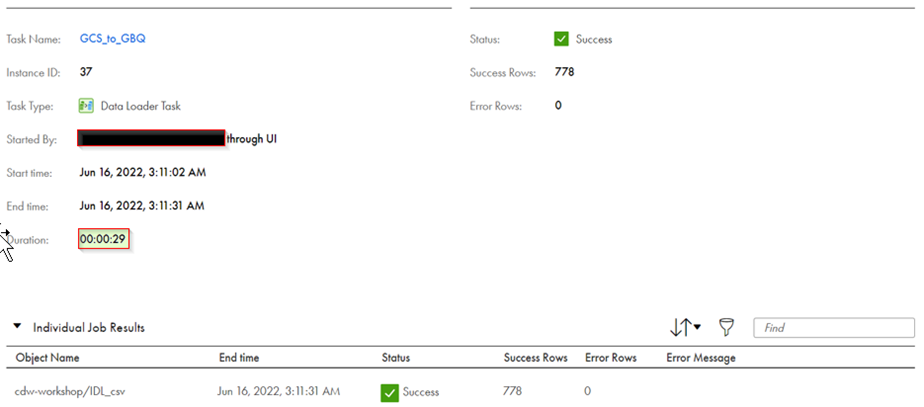How a Data Loader Helps Drive Data Democratization and Smarter Business Decisions
This blog has been co-authored by Shivam Srivastav.
Business and technical users alike need easy access to timely and trustworthy data to be able to do their jobs efficiently. Providing self-service access to such data through data democratization and a cloud data marketplace enables just about anyone within an organization to use data for better, more-informed decision-making. But in order for data democratization to be effective, organizations need to be able to load high volumes of data or build scalable pipelines quickly and without friction. What’s the best way to do that? The answer lies in having a data loader.

How a Data Loader Enables Data Democratization
To explain how this process works, let’s start with data integration. It can be difficult and expensive to identify resources for data integration tasks. Using different coding platforms and technologies adds another layer of complexity. It makes it more challenging to upskill resources to get data in and out of source systems.
In addition, some organizations maintain multiple data marts across different cloud ecosystems. This makes it challenging to quickly and easily integrate data across platforms. Your solution needs to unify your data. This enables a seamless transition to an enterprise-grade platform. And it provides you with availability of all the data needed for effective analytics. It also helps overcome budget concerns and limited skillset availability.
Most cloud service providers do not support a wide variety of data sources. And current solutions in the market tend to become expensive after a free trial period. But a data loader can help you perform your data integration tasks and enable data democratization. It facilitates the process of accessing and moving your data from multiple sources into a central location, such as a cloud data warehouse.
Informatica’s Data Loader offers a three-step wizard for multiple ecosystems at no cost and requires zero-code, zero DevOps and zero infrastructure. Our Data Loader is designed to help users beyond IT make smarter business decisions. Data Loader can load practically any of your data to your cloud ecosystems in minutes for free.
This differs from data ingestion functionalities in individual cloud ecosystems. Those may not support a wide variety of connectivity to data sources. Additionally, you may need to issue subscriptions in cloud ecosystems to ingest your data. Along with the cost, this requires skill and maintenance. But Informatica Data Loader provides a simple three-step wizard that helps you load data from source to target.
Data Loader in Action: A Retail Use Case
Let’s examine how Informatica Data Loader enables fast, free and frictionless data integration through the lens of a retail company aiming to optimize replenishment. The goal of the global replenishment manager at a large retail chain is to optimize supply and demand. The manager needs to understand and leverage datasets to make effective stocking decisions and anticipate inventory needs.
The retailer’s enterprise-level data is stored in multiple applications, such as Salesforce and ServiceNow. The company’s in-house analytics team has also adopted an ecosystem, such as Snowflake, Databricks or Google Cloud Platform, for cloud data warehousing and analytics.
To avoid a delay in stocking decisions, it is essential for the analytics team to have access to all the relevant data to derive outputs for immediate business decisions. That’s where Data Loader can come into play, as it is compatible with 30+ different source types. It provides a free way to load data into the retailer’s Snowflake, Google BigQuery or Databricks ecosystems, as needed.
For example, it takes less than 30 seconds to load the retailer’s data to Google BigQuery from Google Cloud Storage using Informatica Data Loader. As we can see in Figure 2, the job execution page displays detailed execution results for every asset it loads data from.

Now, the retailer has used Data Loader to get all the relevant data into Google BigQuery for analysis. The global replenishment manager has real-time insight into the company’s inventory. The manager can go directly into the system and see the insights as a business user. This makes it easier for the manager to direct the necessary amount of stock to each store. It helps them meet demand without ordering product that will sit stagnant on the shelves.
Key Benefits of Informatica Data Loader
Informatica Data Loader offers several benefits for companies such as the retailer mentioned in the above example. Data Loader
- Carries zero budget concerns
- Does away with the need for an extensive data integration skillset with a three-step wizard
- Requires no manual setup or additional installation
- Captures source data and schema changes, with no additional coding
- Supports major cloud data warehouses and data sources
- Offers a faster and frictionless experience to run data loading tasks
Once your data is loaded into your target using Data Loader, you can build on your data program with other Informatica Intelligent Data Management Cloud™ (IDMC) services. This provides add-on features and functionalities for your data journey on a trial or subscription basis.
Informatica Data Loader enables you to unify disparate data sources on cloud platforms with high-speed data ingestion capabilities. This will help you derive value from your data quickly. And, ultimately, it will enable data democratization at your organization.
Supported Data Loader Sources
Informatica Data Loader supports multiple formats of data as sources. This includes structured, semi-structured and data from several categories of applications.
Sources that are currently supported by Data Loader include: Amazon Aurora Database, Amazon S3, Box, Coupa, Cvent, Eloqua, Google Analytics, Google Cloud Storage, Google Cloud Spanner, Jira, MongoDB, Marketo, Microsoft Azure Data Lake Storage Gen2, Microsoft Azure Blob, Microsoft CDM Folders, MSD Dynamics 365 Ops, MSD Dynamics 365 Sales, Microsoft SQL Server, MySQL Database, Netsuite, Odata, Oracle Database, PostgreSQL Database, Salesforce (Sales, Service, Financial Health), Salesforce Marketing, SAP SuccessFactors Odata, ServiceNow, Shopify, Stripe, Xactly, Zendesk and ZuoraAQUA.
How to Get Started with Informatica Data Loader
Currently, Informatica provides free Data Loader offerings for the following ecosystems. Users can register using the links below:
Data Loader is completely free to use, with no billing or payment information required. Your organization’s email ID is preferred for login purposes. Your data center region can be selected per user preference. After your registration, you will be logged into Informatica Intelligent Data Management Cloud (IDMC). Then you can build unlimited Data Loader tasks for free.
Get started today to load practically any amount of data into your cloud data warehouse and unlock meaningful analytics by visiting http://www.informatica.com/dataloader.
You can also try our new Data Loader via the interactive demos below:








